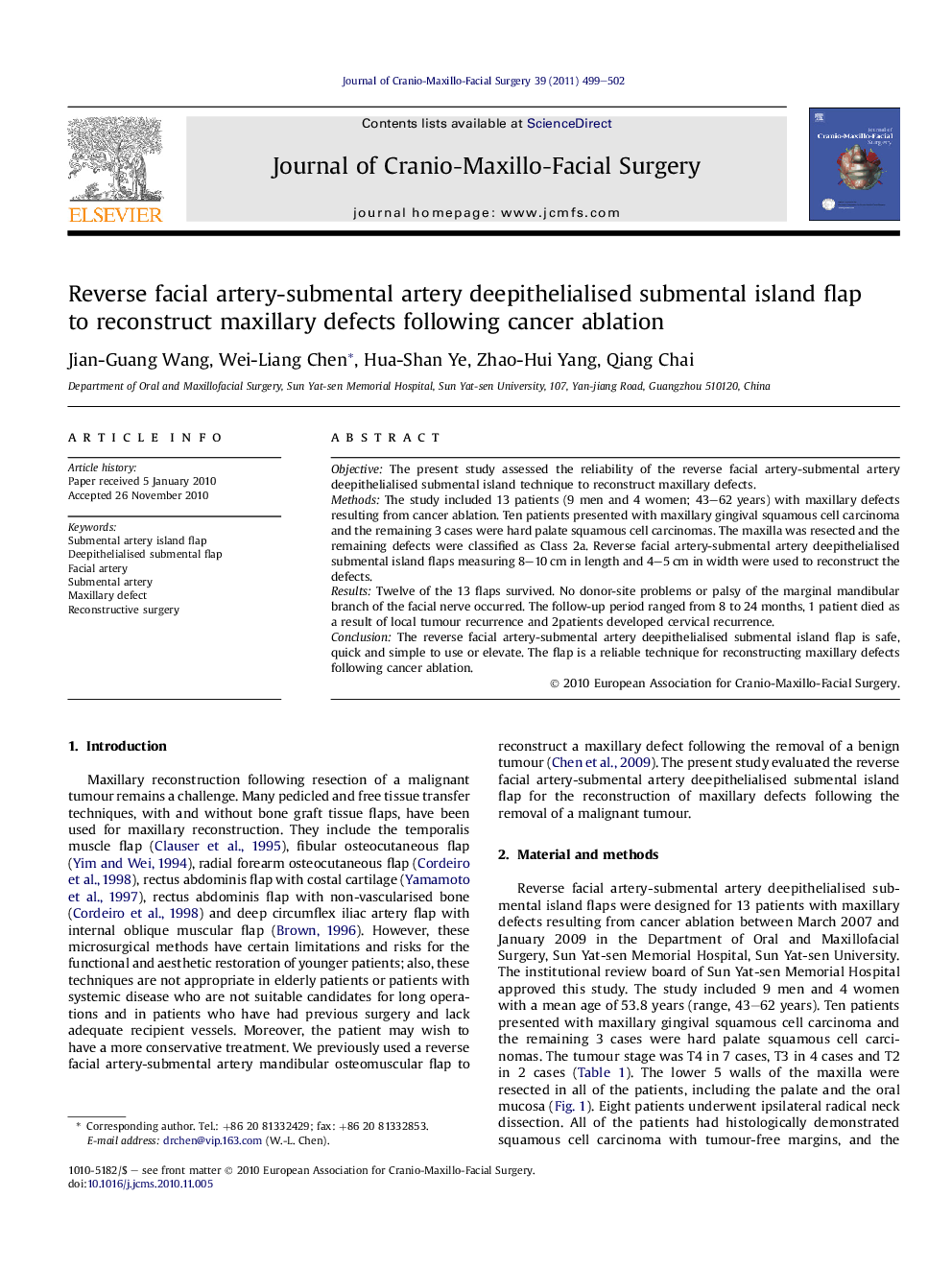| Article ID | Journal | Published Year | Pages | File Type |
|---|---|---|---|---|
| 3143681 | Journal of Cranio-Maxillofacial Surgery | 2011 | 4 Pages |
ObjectiveThe present study assessed the reliability of the reverse facial artery-submental artery deepithelialised submental island technique to reconstruct maxillary defects.MethodsThe study included 13 patients (9 men and 4 women; 43–62 years) with maxillary defects resulting from cancer ablation. Ten patients presented with maxillary gingival squamous cell carcinoma and the remaining 3 cases were hard palate squamous cell carcinomas. The maxilla was resected and the remaining defects were classified as Class 2a. Reverse facial artery-submental artery deepithelialised submental island flaps measuring 8–10 cm in length and 4–5 cm in width were used to reconstruct the defects.ResultsTwelve of the 13 flaps survived. No donor-site problems or palsy of the marginal mandibular branch of the facial nerve occurred. The follow-up period ranged from 8 to 24 months, 1 patient died as a result of local tumour recurrence and 2patients developed cervical recurrence.ConclusionThe reverse facial artery-submental artery deepithelialised submental island flap is safe, quick and simple to use or elevate. The flap is a reliable technique for reconstructing maxillary defects following cancer ablation.
